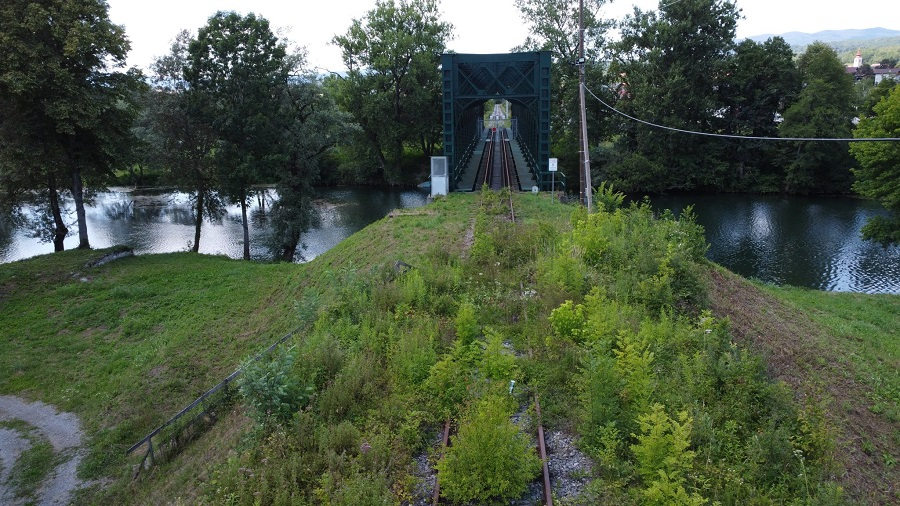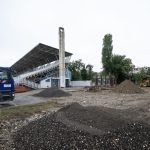One of my favourite things about my ‘job’ is the random nature of my inbox. Once I sift through the constant abuse from my trolls, there are always a couple of very random and intriguing invitations and leads. Croatia is such a fascinating country and so few people write about it in English that I invariably get selected by default.
Incoming email from a friend, one of my very favourite people in Zagreb a few weeks ago:
hello there
long time no see (or hear), hope to grab a beer at some point in the near future?
to make a long story short: a friend of mine Jon Worth is doing this crazy project of trying to cross every single railway border crossing in europe
here is the project web site: https://crossborderrail.trainsforeurope.eu/
he will be passing through zagreb in early july (only couple of hours will be in zagreb) and I was wondering if wanted to join us for a beer near the railway station
fun fact (actually, not funny at all); slowest stretch of rail travel during his 40 days of trail traveling will be in croatia
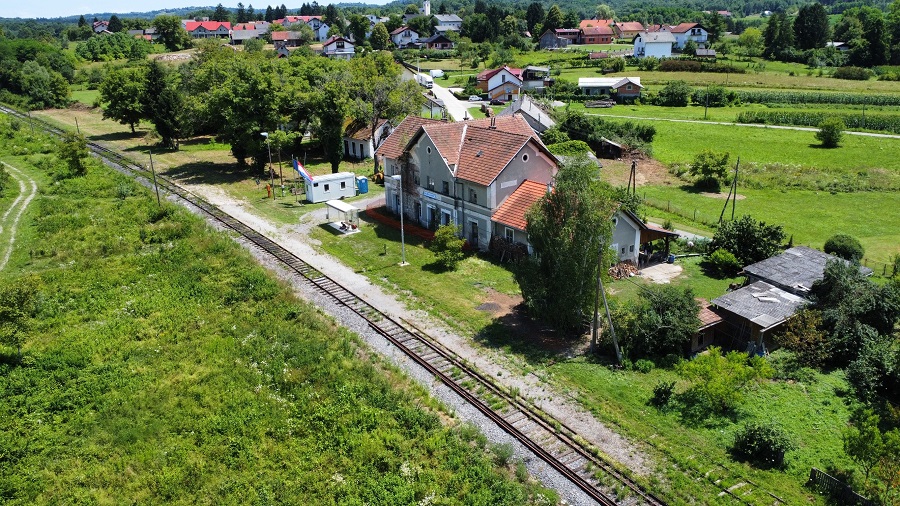
Although train geeks are not really my thing, my Croatian friend has a fine understanding of the art of the absurd, and so I knew there would be more to this than advertised. The promise of free beer sealed it, then I promptly forgot about the whole thing until my friend sent me a reminder a few days ago. Just what was this project, and who was this guy?
It turns out it sounded rather interesting indeed.
A chap with his own Wiki page, this Jon Worth was a political blogger, journalist and editor who regularly writes about EU policy, Brexit and Germany policy. Since 2015 he has been a visiting professor at the College of Europe. His Euroblog ranked the third most influential left-of-center blog in 2010 by Social Europe. And he seemed to be rather passionate about train travel and improving cross-border train travel and developing a digital European rail timetable in particular.
His visit to Croatia was Day 25 of a 40-day, publicly crowdfunded project inspired by an initiative by the Chairman on the Transport Committee of the European Parliament:
Back in 2015, the then chair of the Transport Committee in the European Parliament, Michael Cramer examined 15 so-called “missing links” – places where trains used to cross borders within the European Union, but no longer do.
7 years on I wondered: what has come of those missing cross-border rail links Cramer had proposed to fix when he was a MEP?
So the idea was born to plan a huge rail and bike journey that crosses every internal border inside the European Union (and EFTA countries) that you can cross by train. And en route stop for at least long enough to organise a meeting in the political capital of each country to discuss these issues with local activists,
My instructions from my friend were to meet him on Platform 2 of Zagreb Train Station at 18:27 to await the arriving train from Karlovac, which threw me into some confusion, as I could not work out what border was being crossed or where Worth was coming from.
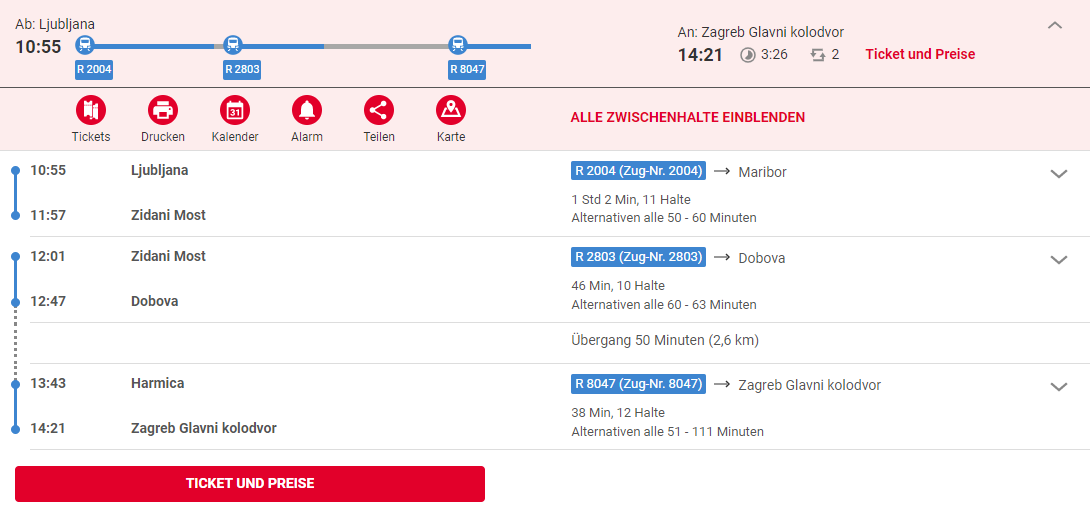
As often happens these days, the day before we were due to meet, the inbox gifted me another gift, this time from a Swiss friend who was planning a train trip from Ljubljana to Zagreb, only to find he would have to WALK 2.7 km between the two countries if he wanted his preferred travel time.
Ljubljana to Zagreb, once an internal connection in the former Yugoslavia, today a journey between two countries, with a Schengen border in between. It is my understanding that this walk is not necessary on the majority of the connections between the two, but it does apparently exist. And things will hopefully improve as the Schengen border moves to the east of Croatia.
And so to Platform 2 of Zagreb Train Station, where my friend greeted me cheerfully with the surprising news that the Croatian train was late. We caught up until, some 30 minutes later, the Karlovac train pulled into Platform 4, and Jon Worth emerged, complete with trusty fold-up bike to fill us in on his adventures so far.
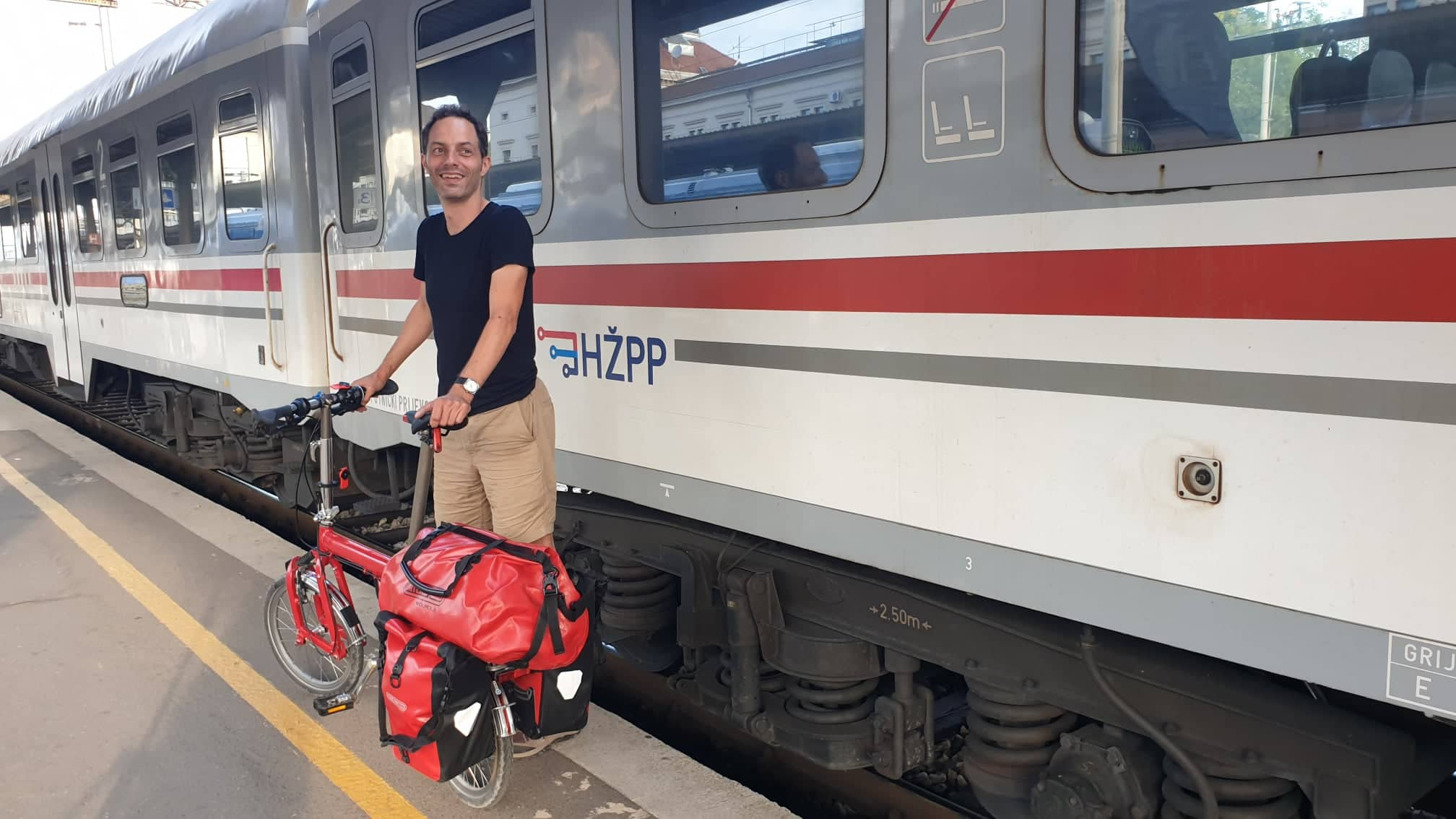
He had started his day in Ljubljana and decided to enter Croatia via Novo Mesto and Metlika towards Karlovac via Bubnjarci, before heading to Zagreb for meetings and dinner and then the overnight train through Slovenia to Munich.
As not all the routes in the project are functional, Worth is also travelling with a foldup bike to cover border crossings, and his day included a 38-kilometre cycle to Karlovac from the border.
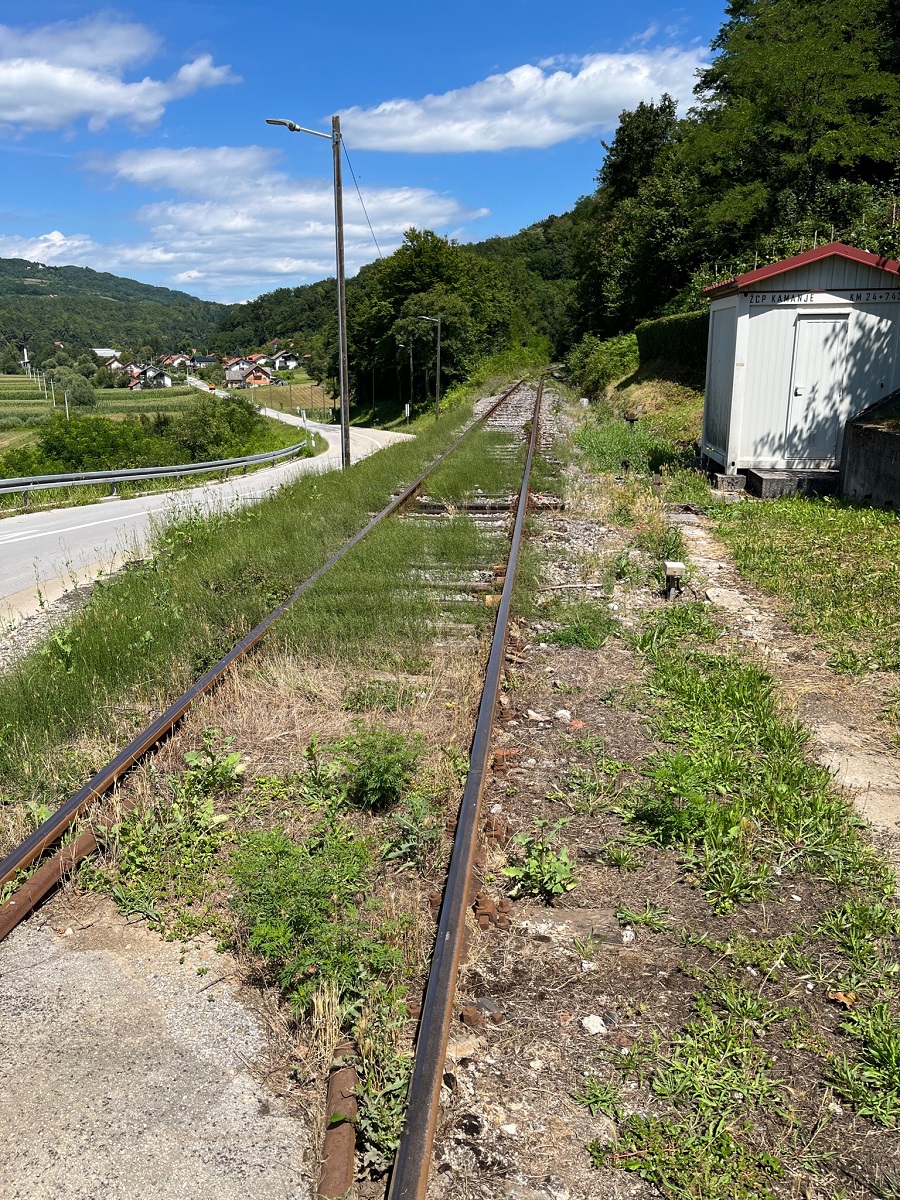
No train has run between Croatia and Slovenia since COVID, as the weeds suggest, and while there is a service part of the year from Bubnarcji during the year, it does not operate in the summer.
Bubnarcji station itself is a sad shadow of its former self, where chickens roam the platforms where once cross-border passengers did.
“In fact, the railway in Bubnjarci is perhaps the worst I’ve seen so far, covered in oil, and the bridge it crosses is physically blocked by something, I guess to prevent migrants from crossing. That’s why I cycled here all the way to Karlovac,” said Worth.

Worth knew that he would not be taking the train on the Croatian side due to the timetable, which saved Croatia from an ignominious award of the slowest track on the entire project across each EU border – just 28.23 km/h. Unconfirmed eyewitness accounts claim that Worth cycled to Karlovac quicker. The second slowest was in Romania at 33 km/h.
What really interested me about meeting Worth, however, was not so much the underinvestment in Croatian railways – it is hardly news (and as long as we have pearls like the recently-launched Osijek to Split train service which takes 13 hours – at least officially, the first one was over 80 minutes late), but the total lack of coordination between national railways to improve information and cross-border travel. The raging success of the privately-owned Regiojet trains from Central Europe to Croatia’s Adriatic coast has shown that there is huge potential in increasing and developing cross-border rail travel.
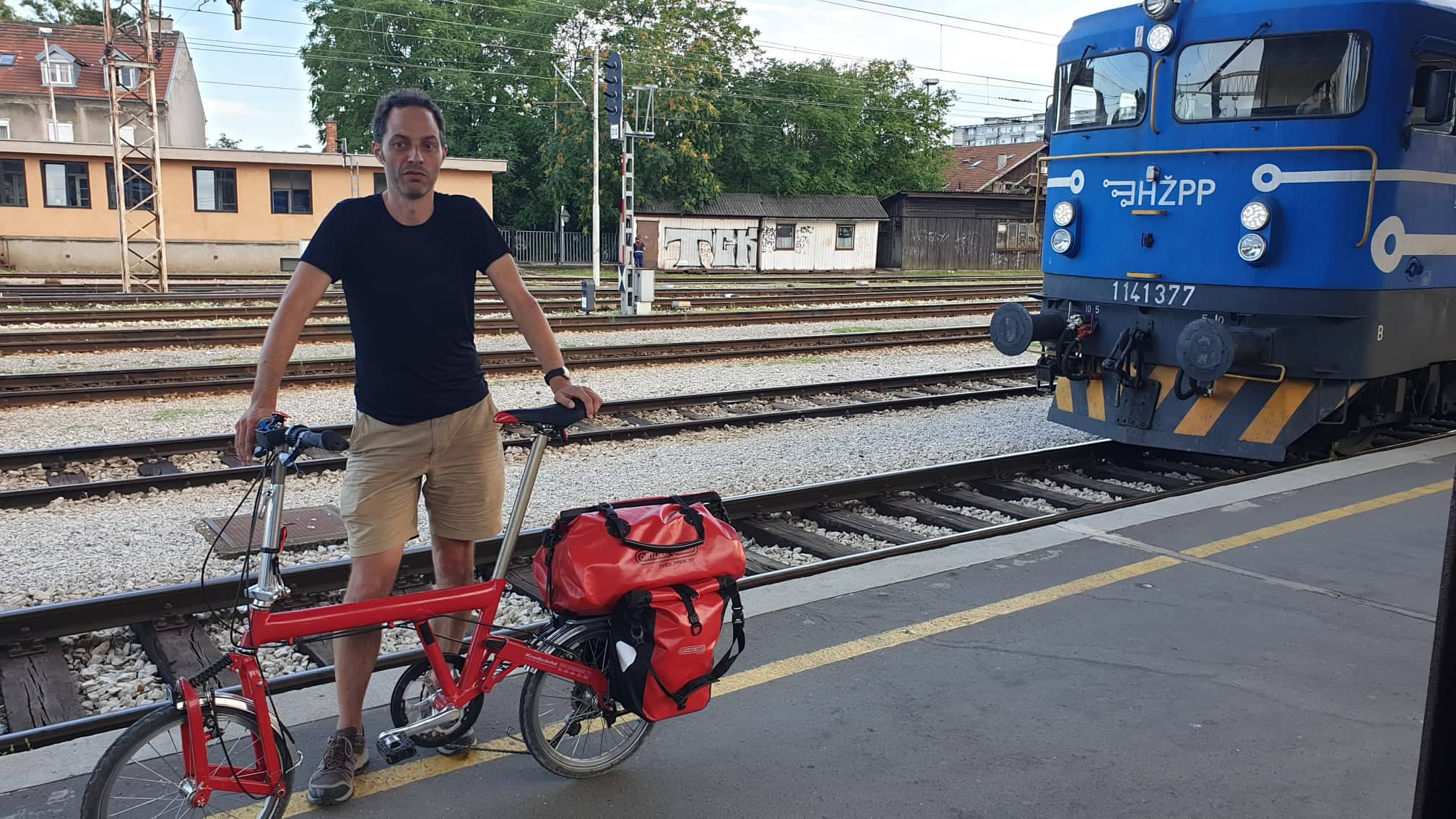
But one of the key issues is a very basic one which really should not be an issue in this digital age – lack of information.
One of Worth’s aims is to have a digital rail timetable for Europe and a Skyscanner-type website service for buying rail tickets. It seems an achievable goal. I actually thought something like this existed with the www.bahn.de website, but that excellent German resource is actually quite incomplete when it comes to national timetables. A Worth blog earlier this year gives an outstanding example of how Croatia’s already terrible rail network is actually portrayed to be even worse than it is – bringing additional frustrations to passengers. The case of the cross-border service from Osijek to Pecs in Hungary illustrates the point perfectly.
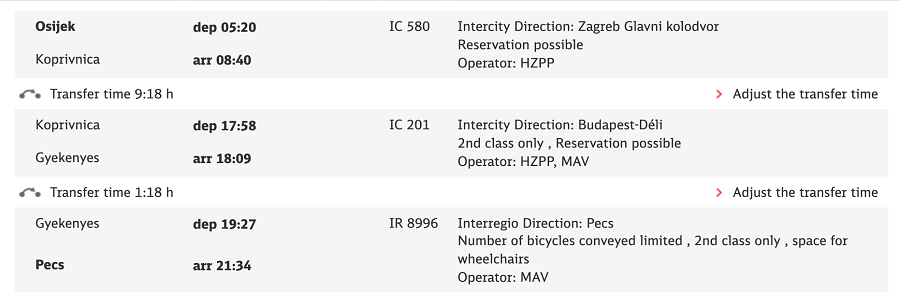
When Worth wrote his blog earlier this year, he found only one train a day between Osijek and Pecs, a distance of 90 km and 1 hour 20 by car.
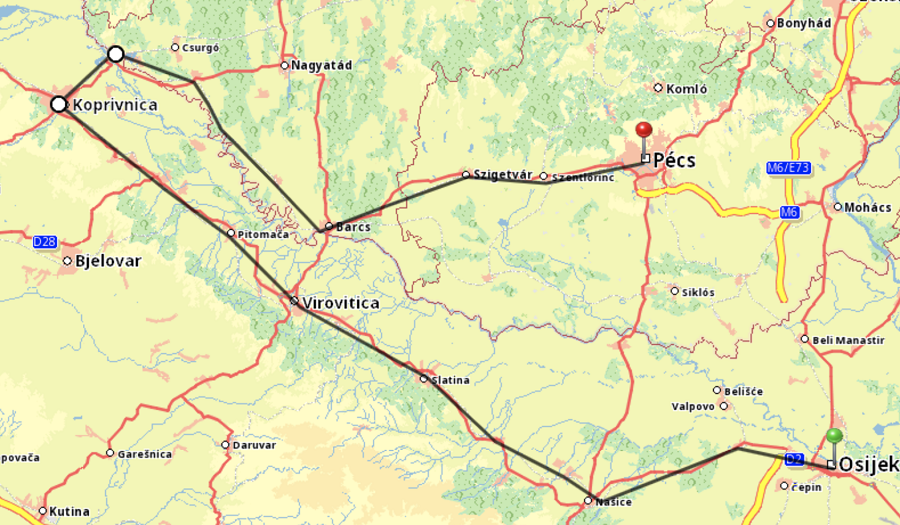
The train journey took an exceptional SIXTEEN hours and 14 minutes, with a 10-hour layover in Koprivnica.
And yet, there is a functioning rail track between the two countries.
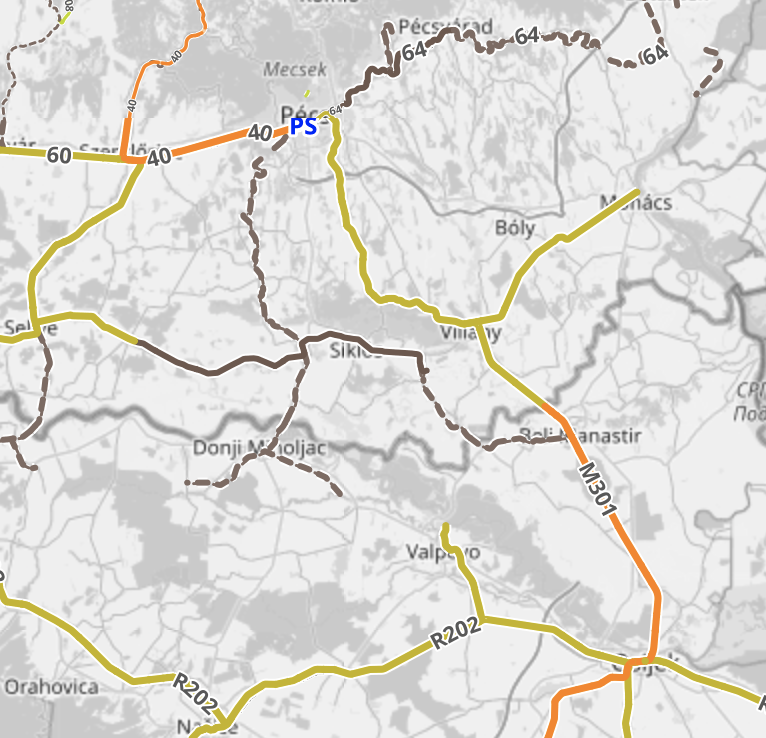
And, on the Bahn.de timetable, there is also a cross-border train to Beli Manistir in Baranja from Pecs.
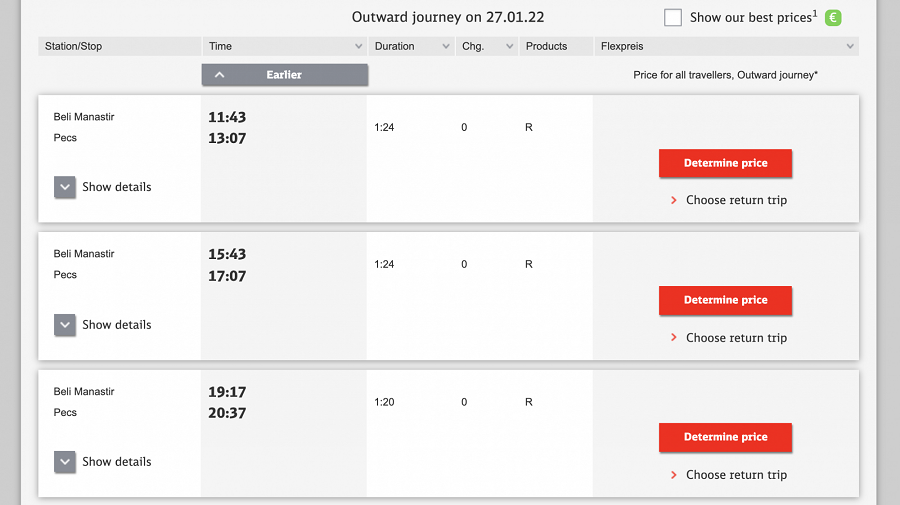
And not just one, but several a day between Baranja and southern Hungary. Given that there is rail track between Osijek and Beli Manistir, there must be a train, surely, thought Worth?
And indeed there is. Several.
He decided to check the Croatian Railways website, and here is what he found.
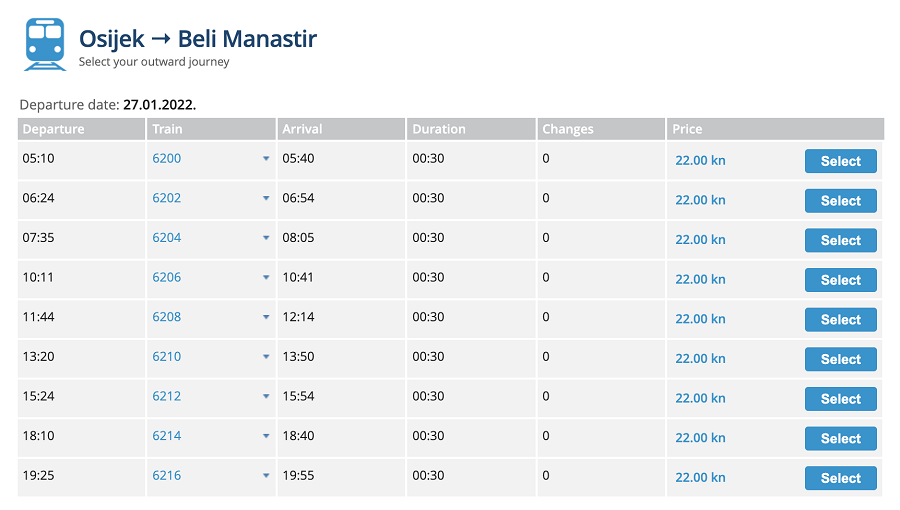
A wonderful selection, many of which connected conveniently for onward travel to Hungary. As Worth noted:
There would be a safe connection departing Osijek at 10:11, arriving Beli Manastir 10:41. Depart Beli Manastir at 11:43 and arrive Pécs at 13:07. Trip time: 2 hours 54 minutes (versus 16 hours 54 minutes proposed by DB!) and 1 change (better than the 2 with DB).
So an efficient train route exists but nobody knows about it, so nobody uses it. How is such a thing possible, we wondered.
Worth explained that sites like Bahn.de have the international network but they are reliant on getting data for national timetables from a (from memory) French body which coordinates with national railways to provide that information. If the national timetable is provided, as it is in Hungary, then all local trains are included in the Bahn.de timetable. If, in the case of Croatia, they are not, then they are necessarily excluded, and passengers are left with the only online solution of a day out in Koprivnica.
But here’s the thing that floored me.
“But 20 years ago,” explained Worth as he sipped his beer, “Croatian national timetables were included and so the information could be found online in the integrated European timetable. Indeed, this was the case until about 5 years ago.”
It seems that someone from Croatian Railways stopped sending the information to the French.
So there we go. If you want to have some low-hanging fruit success at improving the efficiency of Croatian railways, it seems that all is needed is to get some chap to export an Excel spreadsheet to the responsible French organisation to add to the European database. And in one email, we could reduce journey times from 16 hours to under three. And THAT would surely place Croatia as the EU champions of improved rail performance.
#CrossBorderRail summary Day 25 https://t.co/dK0kEwhgUY
— Jon Worth (@jonworth) July 11, 2022
I leave the final word to Jon Worth himself, who uploaded his observations by video on Twitter:
And perhaps the final, final word of this quite magnificent poster at Zagreb station, seemingly warning people to be aware of the oncoming speedy train. I can’t think of a more fitting symbol of the state of Croatia’s railways.
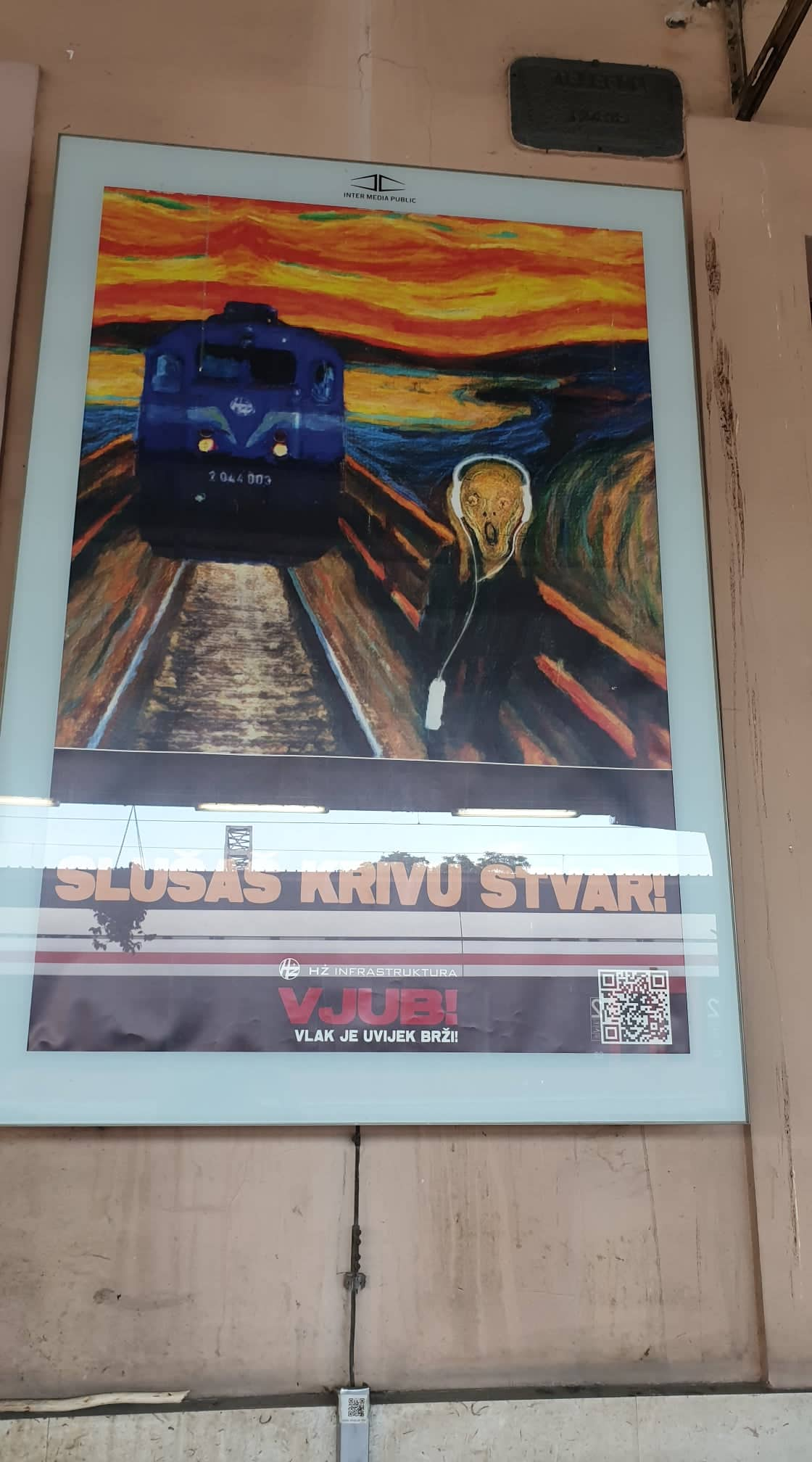
Now will someone please send that email to France, please?
You can follow Jon Worth’s EU Cross Border Rail Project here.

